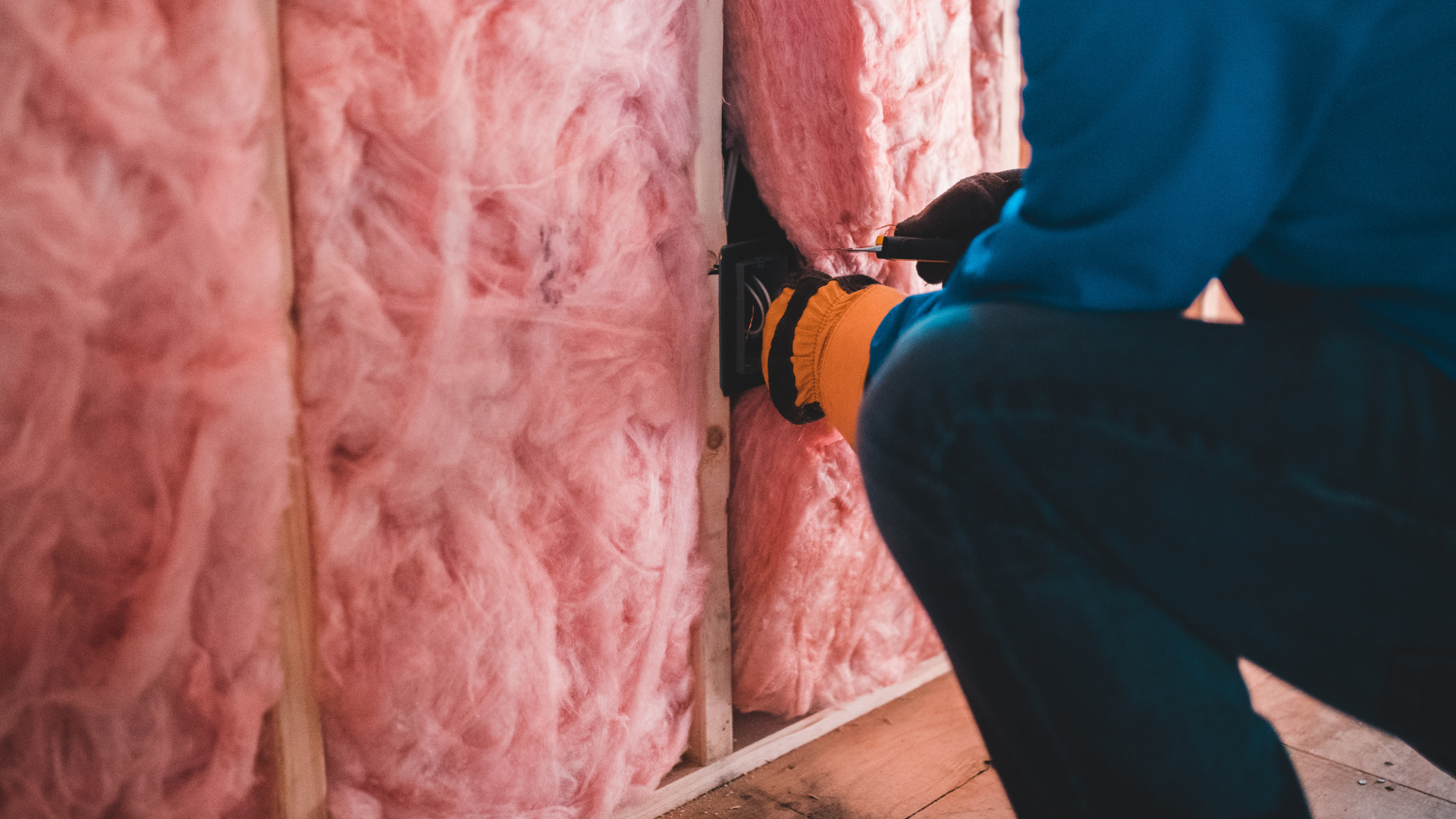Roof insulation might not be the first thing you think of when looking for ways to save on energy bills, but it plays a surprisingly big role in making your home more energy-efficient, comfortable, and ultimately, less costly to run. Whether it’s a scorching summer or a chilly winter, quality roof insulation helps maintain the right temperature inside your home, meaning your heating and cooling systems don’t have to work as hard. Before you install your new insulation, it is important to assess the quality of your roof as you want your insulation to work. There are many benefits of a roof replacement so think about this beforehand, as you do not want to have to get it replaced at an inconvenient time because you put it off.
What Does Roof Insulation Actually Do?
The primary job of roof insulation is to create a barrier between your home and the outside environment. Think of it like a protective layer that blocks the flow of heat in or out of your home. During winter, insulation keeps the warmth generated by your heating system inside, while in summer, it blocks outdoor heat from seeping in. This way, insulation reduces the workload on your HVAC system and, as a result, cuts down on energy costs.
But how much can it really save you? That depends on factors like the type of insulation you choose, the climate where you live, and the specific layout and age of your home. Generally speaking, well-installed roof insulation can reduce heating and cooling costs by up to 25%, making it a solid long-term investment.
How Roof Insulation Works Throughout the Seasons
Summer Savings
In the heat of summer, roofs often absorb a massive amount of heat from the sun. This heat transfers downwards, making your living spaces uncomfortably warm and forcing your air conditioning to work overtime. Insulation acts as a shield, reducing the amount of heat that passes into your home, so your cooling system doesn’t have to use as much energy. Less energy use means lower electricity bills – and who doesn’t want that?
By choosing insulation with a high R-value (a measure of insulation effectiveness), you’ll enjoy greater control over indoor temperatures, and your air conditioning system will run less frequently, helping to extend its lifespan. Despite the fact that you may not be using your air conditioning as much, you will still need to check it over to ensure that it is running efficiently. Get in touch with an Air conditioning service Scarborough ME, or one similar, to come and take a look at it when needed.
To maximize the benefits of roof insulation, it’s essential to ensure your roof structure is in top condition, as any underlying issues can undermine its effectiveness. For instance, worn-out shingles or poor ventilation might allow heat to escape or enter more easily, negating the insulation’s advantages. Homeowners should regularly inspect for signs of damage and consider consulting professionals who specialize in reliable roofing solutions. This proactive approach not only enhances energy efficiency but also prolongs the life of your home’s protective barrier. By working with experts like Georgia Roof Advisors, you can address potential problems early and maintain a comfortable, cost-effective living environment year-round.
Winter Warmth
In colder months, roof insulation helps keep the warmth inside, reducing the need for heating. Without insulation, heat can escape through your roof, meaning your heater has to work harder to keep things cozy. With quality insulation, the warmth stays where it’s needed, and you can set your thermostat lower without feeling a difference. Lower thermostat settings lead to immediate energy savings and reduce strain on your heating system, which can mean fewer repairs and maintenance over time.
The Transitional Months
Autumn and spring bring milder temperatures, which may tempt you to ignore energy efficiency. However, these in-between seasons can be perfect times to maximise savings with roof insulation, and considering the condition of the roof can be a good starting point. Taking help of professionals for roofing Palm Harbor, or in a nearby location, can ensure a well maintained roof for energy efficiency. A sound roof, with proper insulation, can help in regulating home’s temperature. Insulation helps stabilise indoor temperatures during fluctuating weather, meaning you can avoid constantly adjusting your heating or cooling systems. Over time, this moderation leads to a more comfortable home without constantly running up your utility bill.
Types of Roof Insulation and Their Impact on Costs
If you’re considering installing or upgrading your roof insulation, understanding the different types is essential to make a smart choice. Not all insulation materials work the same way, and each has its pros and cons. Here’s a rundown of popular options:
- Fibreglass Batt Insulation – One of the most affordable and widely used options, fibreglass is easy to install, durable, and offers solid heat resistance.
- Spray Foam Insulation – This type forms a tight seal that blocks air and moisture infiltration, but it’s more costly than other types. The benefit? Superior energy savings.
- Blown-In Insulation – This insulation works well for covering hard-to-reach areas and offers a high R-value. It’s great for older homes where retrofitting insulation is required.
- Reflective or Radiant Barrier Insulation – Primarily used in hot climates, this insulation reflects heat away from the roof, making it a strong choice for summer energy savings.
- Rigid Foam Board Insulation – Known for its high insulating power, rigid foam board is often used in roofs and can significantly enhance thermal resistance.
Each type of insulation has different up-front costs, but they all contribute to lower energy bills and increased comfort, which eventually offsets the initial investment.
Why Roof Insulation Is a Smart Financial Decision
It’s easy to think of insulation as just another cost, but it’s genuinely an investment that pays off in several ways beyond just lower energy bills. Here’s why roof insulation is one of the smartest home upgrades you can make:
- Reduced Energy Bills – As mentioned earlier, effective roof insulation can cut down heating and cooling expenses by up to 25%. This is a significant saving that adds up over the years.
- Enhanced Comfort – Insulation helps maintain a steady, comfortable indoor temperature, reducing those hot and cold spots that can make a home feel less inviting.
- Increased Property Value – A well-insulated home is more appealing to buyers and renters, which can raise the resale value of your property.
- Longer HVAC Lifespan – By reducing the strain on your heating and cooling systems, insulation helps them last longer and need fewer repairs, saving you on maintenance costs.
- Environmental Benefits – Lower energy consumption means a smaller carbon footprint, so by insulating your roof, you’re also making a positive impact on the environment.
Tips for Choosing and Installing Roof Insulation
Selecting the right roof insulation can feel overwhelming with so many options available. To make things easier, here are a few essential tips:
First, consider the R-value suited to your climate. The R-value you need will vary based on local weather conditions – the colder the climate, the higher the R-value recommended. Next, look into professional installation, especially for complex materials like spray foam. Improper installation can reduce the effectiveness of insulation, so professional expertise is worth the cost. Lastly, check for rebates or incentives. Many local governments offer rebates on energy-efficient home improvements, which can help offset the initial investment.
Maximising Your Investment
Roof insulation may seem like just another layer in your home, but it’s a powerful tool for reducing costs and enhancing comfort all year round. With the right insulation material and professional installation, you’ll notice a difference in your monthly bills and the comfort of your home. And remember, energy efficiency isn’t just about savings; it’s also about creating a more sustainable and eco-friendly living space. So, why not start with the roof over your head? It’s a change you’ll feel – and appreciate – every day.




